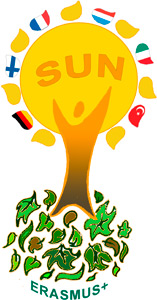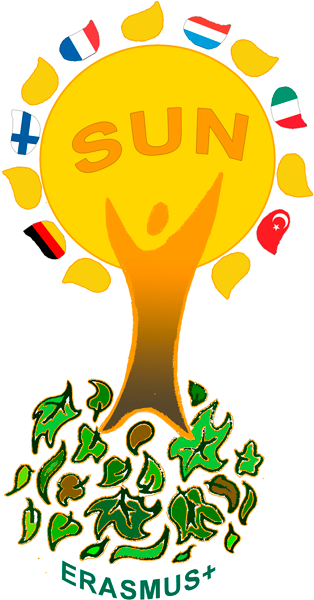From Midnight Sun to Polar Night
From Midnight Sun to Polar Night
There are two nature phenomena in Finland, which only occur in certain areas in the world. These are called the midnight sun and the polar night. The latter takes place in the heart of the winter and the former in the summer.
The midnight sun takes place when the Sun doesn’t go below the horizon during the day. For example, in Nuorgam (the northernmost village in Finland) the midnight sun starts on the 16th of May and ends on the 29th of July. The summer solstice (21st of June) indicates that the midnight sun is halfway through the period of time when it takes place. After the summer solstice the day starts slowly getting shorter and the amount of sunlight decreases. During the period of the midnight sun, some people find it hard to sleep, because it’s so bright all day. On the other hand, however, it’s nice to go fishing and boating at night without any flashlight.
In the winter, an opposite phenomenon takes place in Finland – polar night.
The polar night is a period of time when the Sun stays below the horizon for more than 24 hours. This only occurs above the Arctic and Antarctic circles, and slightly below, due to the refraction of light.
Polar Nights are caused by the tilt of the Earth when the Sun light doesn’t reach the North Pole in the winter. When the days start to get longer the Earth has moved along its orbit and the pole isn’t completely tilted away from the Sun.
The polar night is a period of time when the Sun stays below the horizon for more than 24 hours. This only occurs above the Arctic and Antarctic circles, and slightly below, due to the refraction of light.
Polar Nights are caused by the tilt of the Earth when the Sun light doesn’t reach the North Pole in the winter. When the days start to get longer the Earth has moved along its orbit and the pole isn’t completely tilted away from the Sun.
The polar night begins in the north of Finland at earliest in September. For example, in Nuorgam it begins around the 24th of November and finishes around the 18th of January.
Effects of the Polar Night can be depression, sleeping problems, over eating (especially sweets), memory problems, indifference, and grumpiness. People even take medicine to prevent this from happening.
Yöttömästä yöstä kaamokseen
Suomessa tiedetään kaksi luonnon ilmiötä, jotka tapahtuvat vain tietyillä alueilla maapallolla. Ilmiöt ovat yötönyö ja kaamos. Jälkimmäinen tapahtuu keskitalvella, ja ensiksi mainittu tapahtuu keskikesällä.
Yötön yö esiintyy kun aurinko ei laske päivän aikana Esimerkiksi Nuorgamissa (Suomen pohjoisin kylä) , yötön yö alkaa 16. toukokuuta ja päättyy 29. heinäkuuta. Kesäpäivän seisaus (21. kesäkuuta) kertoo, että yötön yö on puolessavälissä jaksoa, jolloin se esiintyy. Kesäpäivän seisauksen jälkeen päivä alkaa hiljalleen lyhentyä ja auringonvalon määrä vähenee. Yöttömän yön aikana jotkut ihmiset eivät saa kunnolla nukuttua, koska on niin valoisaa koko päivän. Toisaalta on mukavaa mennä kalastamaan ja veneilemään yöllä ilman taskulamppua.
Talvella yöttömän yön vastakkainen ilmiö esiintyy Suomessa – kaamos.
Kaamos on ajanjakso, jolloin aurinko pysyy horisontin alapuolella pidempään kuin 24 tuntiin. Tämä tapahtuu hieman napapiirien alapuolella valontaittumisen takia ja napapiirien yläpuolella.
Kaamoksen aiheuttaa maan akselin kallistus, kun Auringon valo ei talvella ylety Pohjoisnavalle. Kun päivät alkavat pidentyä, Maa on liikkunut kiertoradallaan ja napa ei ole enää täysin kallistunut pois Auringolta.
Suomessa kaamos alkaa pohjoisessa aikaisimmillaan syyskuussa. Esimerkiksi Nourgamin kylässä kaamos alkaa 24. päivän tienoilla marraskuussa ja päättyy tammikuun 18. päivän tienoilla.
Kaamoksen vaikutuksia ihmisiin voi olla masennus, uniongelmia, liikasyönti (erityisesti makeisia ja herkkuja), ja muistiongelmia, välinpitämättömyys ja äreisyys. Ihmiset ottavat jopa lääkkeitä estämään näitä oireita.
Sources:
www.lifeinlapland.com, www.wikipedia.org
https://en.wikipedia.org/wiki/Polar_night
http://www.timeanddate.com/astronomy/polar-night.html
https://fi.wikipedia.org/wiki/Kaamos
http://www.yllaksenyopuu.com/kaamos/
http://ilmatieteenlaitos.fi/aurinko-ja-kuu
http://www.thefreedictionary.com/horizon
By: Kiia Paanila & Minja Bovellan, Nerissa Shakespeare & Salla Nicholl, Finland


